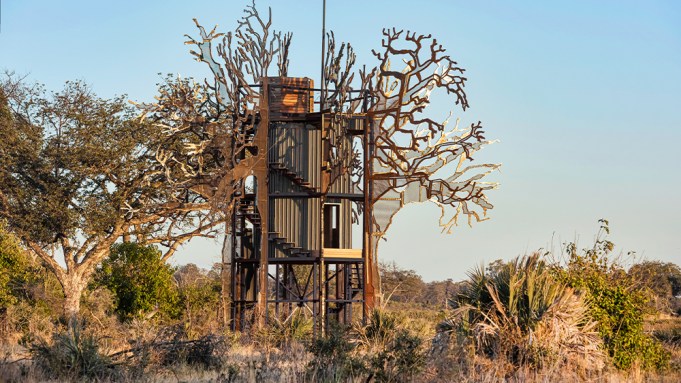Welcome to Ask Robb. At Robb Report, we’ve assembled a crack team of the world’s best travel specialists, our Travel Masters. Their expertise and insight in luxury travel of all kinds is unparalleled. So we’re tapping into it directly for a new series, where our readers—that’s you—pose the pickiest travel problems to the panel. These aren’t workaday issues, whether wrangling a refund or booking a guide, but rather the unique, specific challenges that only veteran globetrotters face.
Dear Robb Report: We’re safari veterans—we’ve hit all the major sights, from gorilla trekking in Rwanda to private game reserves in Botswana. We’ve seen the Big Five, and were lucky enough to watch a kill in the Masai Mara. We love Africa, and safari, more than anything, but we want our next trip to feel fresh, and offer us something more than just retreading our past adventures. Can you help? Yours, Safari Sandy
What a lucky conundrum to face, Safari Sandy. Certainly, you’ve experienced the breadth of what the sub saharan continent can offer—though you don’t mention Victoria Falls in Zimbabwe. If you’ve not helicoptered over there, make sure to add to your to-do list ( and make sure to do that on a sunny day, as the rainbows generated by the spray in sunlight are captivating). But you’re not alone—Roar Africa’s Deb Calmeyer says it’s a commonplace challenge, as many of her clients have planned a dozen or more visits. She has three approaches she deploys for those seasoned safari-goers.
Firstly, consider swapping out the time of year: peak season, or the northern hemisphere’s summer, is usually considered the best time to go on safari, as the harsh, dry conditions encourage wildlife gather round watering holes in denser packs, and the lack of greenery makes spotting easier. But the wet or green season, in our winter, is a startlingly different experience. That same terrain will transform from arid and dusty to lushly forested, filled with the smell of wild sage and damp grass. Animals may be harder to see, sure, but you’re more likely to encounter babies, since they breed when food is most plentiful.
Calmeyer sent a VIP celebrity client to Botswana during a break in filming: “He’d been everywhere, but the only time he could go was October, and that’s called suicide month in Botswana, because it’s so hot,” she recalls. “And he told me ‘That was the best safari I’ve ever had.’ It’s just a different kind of magic.”
The second approach for veteran Africa visitors is to think less about place, and more about theme. Are you an adrenaline-chasing family? What about quad biking through the bush in Namibia, or mokoro boating in Botswana, with a night or two sleeping under the stars in barefoot luxury at Xigera’s treehouse—which Calmeyer and her fellow Travel Masters just voted the greatest suite in the world? For pro-am photographers, Calmeyer’s planned a private helicopter-focused tour, zooming up the Rift Valley, the Saguta desert and Lake Turkana in Kenya, stopping down at each for aerial and up-close shots. People-to-people is another option, perhaps focusing on learning more about cultures in the region rather than animal-spotting. Special permits are required to visit a handful of tribes, like the San in Botswana and the Pökoot in Kenya.
“They’re the last pastoral tribe left, and it’s an hour and a half by helicopter to the north,” she says. “You can’t believe these people still exist, but it’s extraordinary. You can go and have a meal with them, as long as you’ve paid to get the special permission.”
Her third and final recommendation is to focus more deeply on a single place, and look for the experiences that locals might enjoy. Remember, of course, that the bush holds as much fascination for those living and working in it as for visitors.
“For clients like this, I might start planting seeds about the places I knew as a kid growing up that aren’t going to be on the five-star circuit,” explains Zimbabwe-born Calmeyer, nodding to Lake Kariba and Mana Pools, for example. This inland sea is downstream from Victoria Falls; there are lodges ranged around its southern edge though reaching them for most visitors requires an extra private charter.
“It’s far off the map, but it’s got incredible scenery, the mountains and rivers, and jackalberry trees that are tall enough that elephants stand on their back legs to reach them,” she says. “I grew up on that lake: it’s full of crocodiles and you can go sunset fishing on one or two of the lovely houseboats.”
Hopefully those suggestions will help you plan your next trip or two – and if you need more inspiration, here are a few more ideas.


